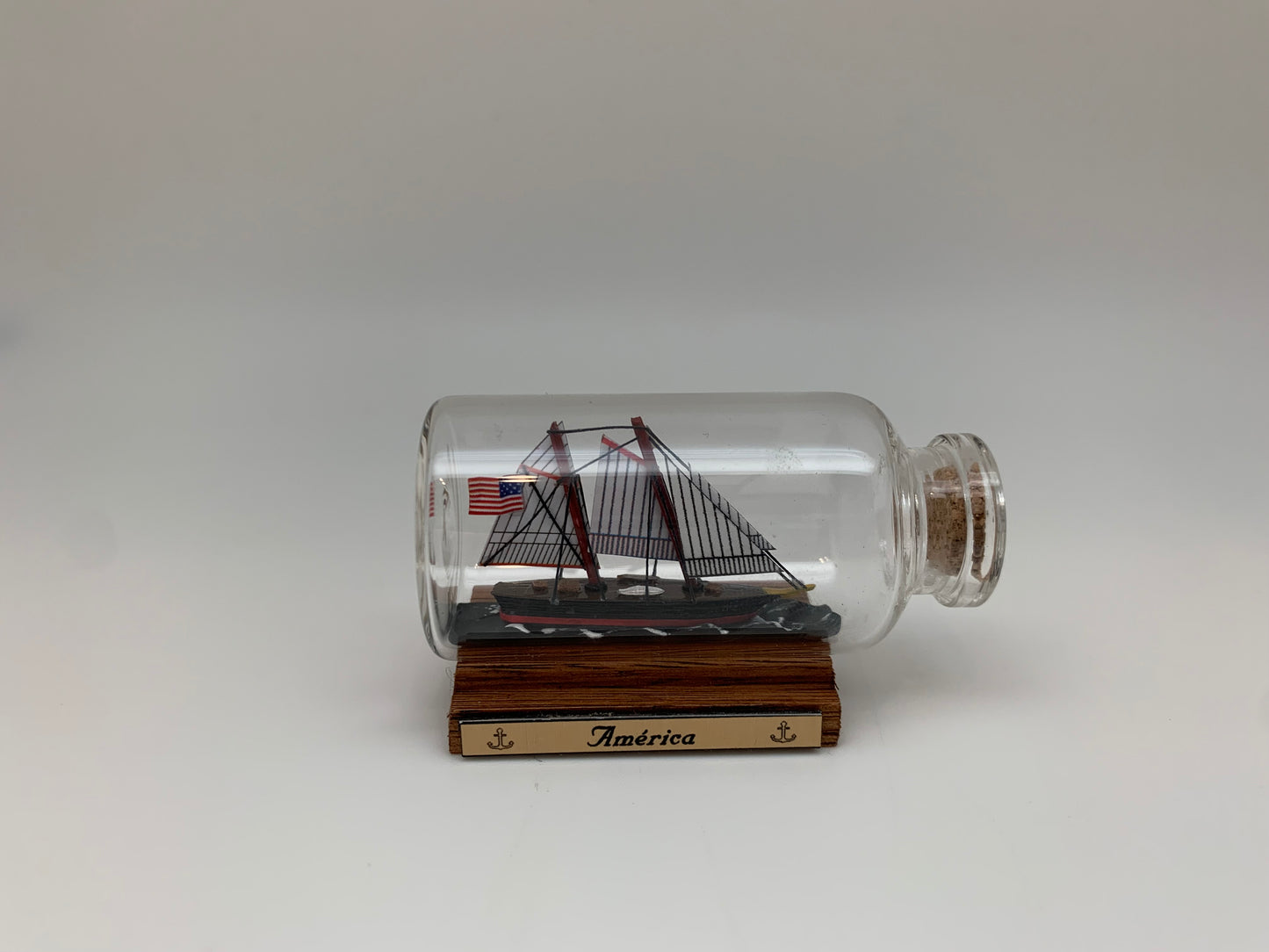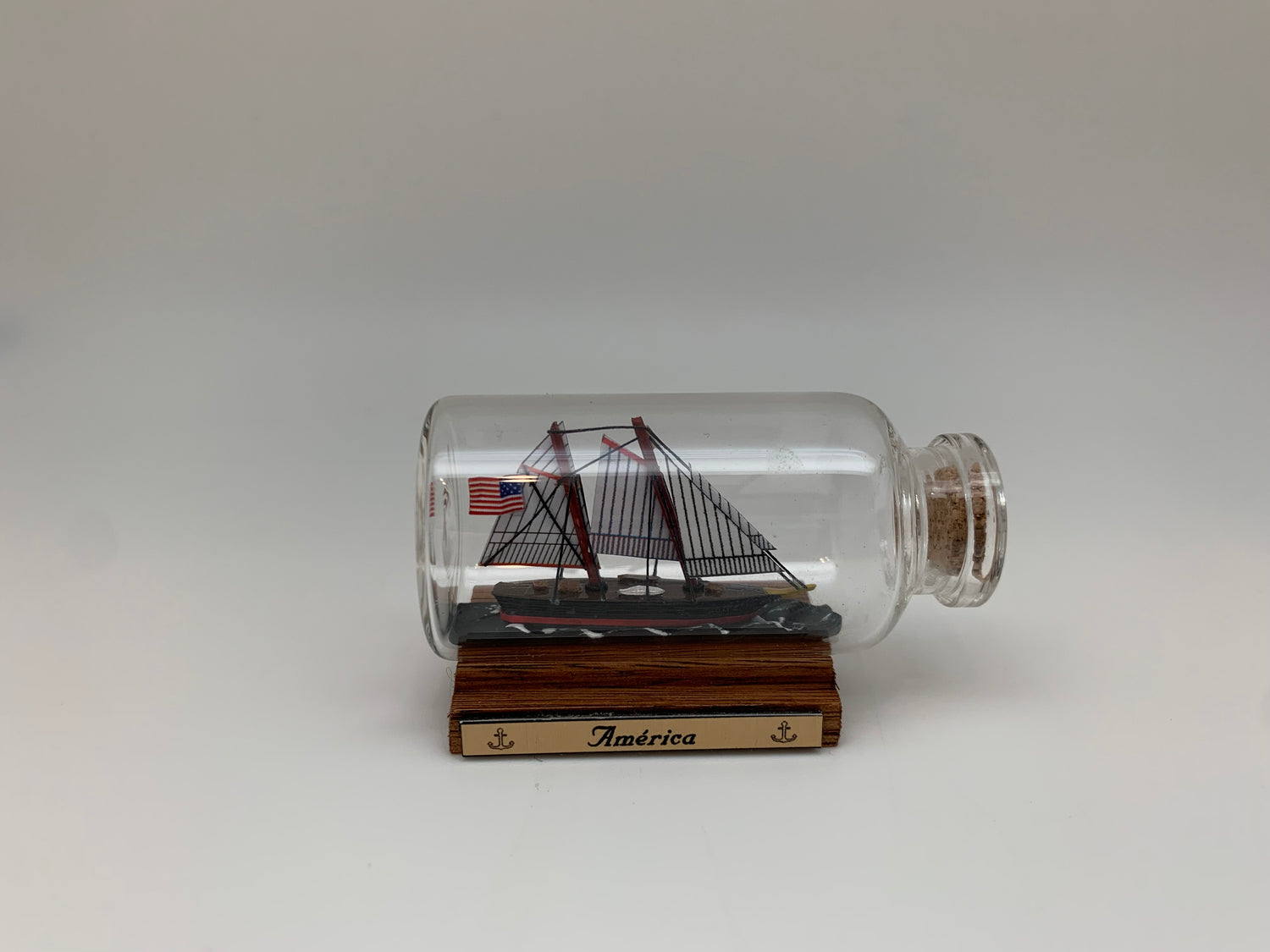sailorscrafts
America 1851
- Regular price
- $25.00 USD
- Regular price
-
- Sale price
- $25.00 USD
- Unit price
- per
Couldn't load pickup availability
Dimensions:
2 ⅜” x 1 ¼” x 1 ¼”
All ships are made by hand in Uruguay and enter through the neck of the bottle. If you’re curious about how they get in there, keep on reading!
Traditionally, ships in bottles were made using drawstrings that allowed a ship that was created outside of a bottle and flattened through the use of hinges to be re-erected once inside the bottle by pulling the strings. Our ships are created by hand using a technique that requires even more skill and precision. The model is first built and completely finished outside of the bottle. Then, each mast, including sails and all, is removed again. The hull is then inserted into the bottle, and each mast is individually added and glued into place. This technique makes it possible to reproduce fine details because pressure on the rig is minimal and more delicate materials can be used. It also allows the hull and superstructure to be larger because they are able to take up the entire diameter of the bottle neck (as opposed to the drawstring method where the entire ship has to fit through while folded).
America:
America was a 19th-century racing yacht and first winner of the America's Cup international sailing trophy. On August 22, 1851, America won the Royal Yacht Squadron's 53-mile (85 km) regatta around the Isle of Wight by 18 minutes. The Squadron's "One Hundred Sovereign Cup” was later renamed America’s Cup after the original winning yacht. The America’s Cup was defended 24 times in a row in Newport, RI until 1983.
The oldest existing ships in bottles were made around 1760. These are intricate professional pieces. Apparently, they were made by commercial workshops specializing in the construction of ship models to serve as gifts for kings, admirals, and other important people.
Dating back to 1850, ships in bottles were constructed by sailors on board the tall ships. At this time beverage bottles were made from clear glass and became available to the public. After a sailor had finished his favorite drink, possibly on a wide, calm sea, the empty bottle in front of him served as inspiration. Since the tools and materials available on board the ship were limited, the first examples of maritime craft are of a rather crude and simple design. These old models, however, exude a special and unique charm in spite, or perhaps because of, their simplicity.
Often the sailors chose to copy their own ship, and if in a harbor, the scene around them may have been placed in the background. In this way, these models became sources of contemporary history. Nowadays, most of the ships in bottles are put together on land. There are clubs and fairs where ideas and new construction techniques are shared.
Share


